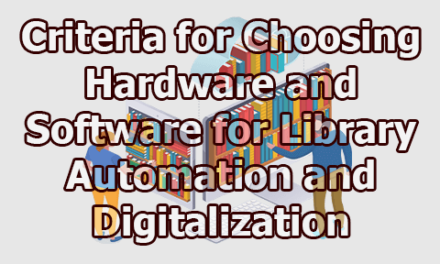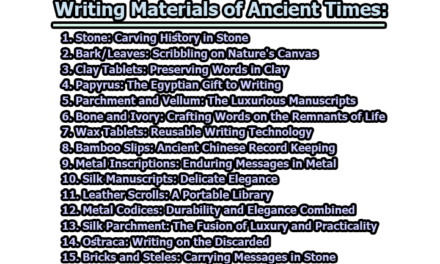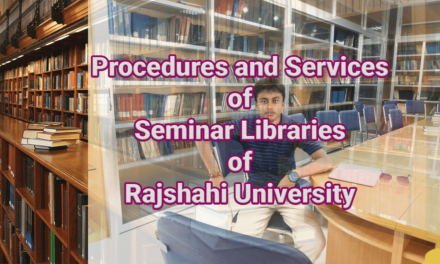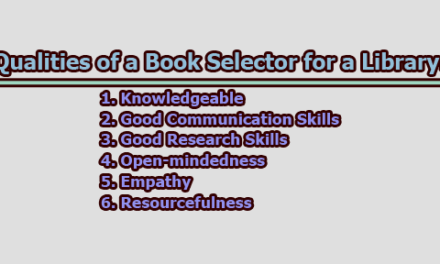Theoretical Framework of Knowledge Management Practices in Higher Educational Institutions:
Knowledge Management (KM) is a process of creating, sharing, using, and managing knowledge and information within an organization to achieve its objectives. In recent years, there has been a growing interest in applying KM practices in Higher Educational Institutions (HEIs) to enhance their academic and administrative functions. The application of KM practices in HEIs can help in the creation of a knowledge-based culture, promoting innovation, and improving the quality of education and research. Theoretical frameworks can help understand and analyze the complexities involved in the implementation of KM practices in HEIs. Therefore, this topic aims to explore the theoretical frameworks that can be used to study KM practices in HEIs. The theoretical frameworks can help in identifying the key factors that influence the successful implementation of KM practices, such as organizational culture, leadership, communication, and technology. The study of theoretical frameworks of KM practices in HEIs can help in developing a comprehensive understanding of the role of KM in enhancing the performance of HEIs. In the rest of this article, we will explore the theoretical framework of knowledge management practices in higher educational institutions.
Knowledge Management Process:
The Knowledge Management (KM) process involves a series of activities that enable organizations to create, capture, organize, store, disseminate, and apply knowledge to achieve their goals. The application of KM practices in Higher Educational Institutions (HEIs) is essential to enhance academic and administrative functions, promote innovation, and improve the quality of education and research. The following is a brief description of the KM process in the context of HEIs, based on the theoretical framework of KM practices in HEIs.
A. Creating Knowledge: The first step in the KM process is creating new knowledge. HEIs are knowledge-intensive organizations that generate knowledge through research, teaching, and learning activities. Creating new knowledge involves the identification of new ideas, concepts, and insights that can be useful for the organization. This can be achieved through brainstorming sessions, research projects, workshops, and other collaborative activities.
B. Capturing Knowledge: The next step is capturing the knowledge created within the organization. Capturing knowledge involves identifying, collecting, and documenting knowledge from various sources such as research papers, reports, lectures, and discussions. In HEIs, this can be achieved through the use of various tools such as databases, knowledge repositories, and content management systems.
C. Organizing Knowledge: Once knowledge is captured, the next step is to organize it in a structured manner. Organizing knowledge involves categorizing, classifying, and tagging the knowledge so that it can be easily retrieved and shared. In HEIs, this can be achieved through the use of taxonomies, ontologies, and metadata.
D. Storing Knowledge: Storing knowledge involves finding an appropriate place to store the knowledge so that it can be easily retrieved and accessed by those who need it. In HEIs, knowledge can be stored in various forms such as databases, knowledge repositories, and content management systems.
E. Disseminating Knowledge: The next step is disseminating knowledge to those who need it. Disseminating knowledge involves sharing knowledge through various channels such as publications, lectures, workshops, and training programs. In HEIs, this can be achieved through the use of online learning platforms, e-learning modules, and social media platforms.
F. Applying Knowledge: The final step is applying knowledge to achieve the goals of the organization. Applying knowledge involves using the knowledge to solve problems, make decisions, and develop new products and services. In HEIs, this can be achieved through the integration of knowledge into teaching, research, and administrative activities.
Knowledge Management Enablers:
Knowledge Management (KM) enablers are factors that facilitate the implementation of KM practices in an organization. In Higher Educational Institutions (HEIs), the implementation of KM practices can be challenging due to the complexity of the organizational structure, diverse stakeholders, and rapidly evolving technology. Therefore, the identification of KM enablers can help HEIs to overcome these challenges and promote a knowledge-sharing culture. The following is a brief description of KM enablers in the context of HEIs, based on the theoretical framework of KM practices in HEIs.
- Technology: Technology is a critical enabler of KM practices in HEIs. It facilitates the creation, capture, storage, and dissemination of knowledge through various tools such as databases, knowledge repositories, and content management systems. Technology can also help to overcome geographical and temporal barriers by enabling virtual collaboration and communication among stakeholders. In HEIs, technology can be used to support e-learning platforms, online courses, and other digital tools that enhance knowledge-sharing among faculty and students.
- Organizational Structure: The organizational structure is another critical enabler of KM practices in HEIs. The structure of HEIs can be complex, with multiple departments, faculties, and administrative units. Therefore, the effective implementation of KM practices requires a clear understanding of the organizational structure and the roles and responsibilities of each unit. This can be achieved through the development of policies, procedures, and guidelines that promote knowledge-sharing and collaboration across departments.
- Collaboration: Collaboration is a key enabler of KM practices in HEIs. Collaboration involves working together to achieve a common goal, sharing knowledge, and learning from each other. Collaboration can be facilitated through various means, such as collaborative projects, workshops, and team-building activities. In HEIs, collaboration can help to enhance research and teaching activities, promote interdisciplinary knowledge-sharing, and foster a culture of innovation.
- Trust: Trust is a crucial enabler of KM practices in HEIs. Trust involves the belief that other stakeholders will act in the best interest of the organization and share knowledge freely. Trust can be built through open communication, transparency, and the recognition of individual contributions. In HEIs, trust can help to overcome the reluctance of faculty and staff to share knowledge, promote a culture of knowledge-sharing, and encourage innovation and creativity.
Barriers in Implementation of Knowledge management in Higher Educational Institutions:
Knowledge Management (KM) practices can be highly beneficial for Higher Educational Institutions (HEIs) in terms of improving teaching, learning, research, and overall institutional performance. However, the implementation of KM practices can also be challenging due to several barriers. The following is a brief description of the barriers to the implementation of KM in HEIs based on the theoretical framework of KM practices in HEIs.
- Lack of Leadership Support: The support of institutional leaders is crucial for the successful implementation of KM practices in HEIs. However, in some cases, leaders may not fully understand the benefits of KM practices or may not prioritize the allocation of resources for KM initiatives. This can lead to a lack of investment in KM infrastructure, insufficient training for staff and faculty, and a lack of incentives for knowledge-sharing.
- Resistance to Change: Resistance to change is a common barrier to the implementation of KM practices in HEIs. Faculty and staff may be resistant to new processes and technologies, preferring traditional methods of teaching and research. This can be due to a lack of awareness of the benefits of KM practices, fear of losing control over their knowledge, or a lack of trust in the system.
- Lack of Knowledge-Sharing Culture: In some HEIs, there may be a lack of a culture of knowledge-sharing. This can be due to the absence of incentives or recognition for knowledge-sharing, a lack of trust among stakeholders, or a lack of awareness of the benefits of knowledge-sharing. This barrier can hinder the creation and dissemination of knowledge, leading to inefficiencies and missed opportunities for innovation.
- Limited Resources: HEIs may face limited resources in terms of funding, time, and expertise for the implementation of KM practices. This can lead to inadequate KM infrastructure, insufficient training and support for faculty and staff, and a lack of incentives for knowledge-sharing. Limited resources can also lead to a focus on short-term goals and a lack of investment in long-term KM initiatives.
- Silos and Fragmentation: HEIs can be highly fragmented, with different departments, faculties, and administrative units operating independently. This can lead to silos of knowledge and a lack of collaboration and knowledge-sharing across units. The lack of communication and coordination can hinder the creation and dissemination of knowledge, leading to inefficiencies and missed opportunities for innovation.
- Technology Issues: Technology is a critical enabler of KM practices, but it can also be a significant barrier. HEIs may face challenges related to the selection, implementation, and maintenance of KM technologies. These challenges can include issues related to compatibility, accessibility, and security. In addition, faculty and staff may lack the skills and knowledge required to effectively use KM technologies, leading to resistance and limited adoption.
- Lack of clear KM strategy: A clear KM strategy is crucial for the successful implementation of KM practices in HEIs. However, in some cases, there may be a lack of clarity around the goals and objectives of the KM initiatives, which can lead to confusion and a lack of direction. This can also result in a lack of alignment between KM initiatives and the overall institutional strategy.
- Intellectual Property Concerns: HEIs are often concerned about protecting their intellectual property and the rights of their faculty and researchers. This can lead to a reluctance to share knowledge, which can hinder the creation and dissemination of knowledge. This barrier can be addressed by developing clear policies and guidelines around intellectual property and knowledge-sharing.
- Lack of metrics and evaluation: Measuring the effectiveness of KM practices is critical to their success. However, in some HEIs, there may be a lack of metrics and evaluation mechanisms to assess the impact of KM initiatives. This can lead to a lack of accountability and a failure to identify areas for improvement.
- Cultural and Language Barriers: HEIs may have a diverse community of faculty, staff, and students, with different cultural backgrounds and languages. This can pose a challenge to knowledge-sharing and collaboration, as language and cultural barriers can hinder effective communication and understanding. This barrier can be addressed through the development of cross-cultural training and support, as well as the use of technology and tools that facilitate communication across different languages and cultures.
From the above discussion, we can say that higher educational institutions are playing a vital role in knowledge creation, delivering, and learning for society and the generation of new knowledge and technologies that are needed by society. The implementation of knowledge management in educational institutions will facilitate student and faculty database management, various report generation, strengthening alumni interaction, improving employability skills of students, improving quality of staff members and students performance, effective decision making and problem-solving, generating funding and collaboration between industry and academia.
References:
- Alavi, M., & Leidner, D. E. (2001). Review: Knowledge management and knowledge management systems: Conceptual foundations and research issues. MIS Quarterly, 107-136.
- Davenport, T. H., & Prusak, L. (2000). Working knowledge: How organizations manage what they know. Harvard Business Press.
- Dalkir, K. (2013). Knowledge management in theory and practice. Routledge.
- Ipe, M. (2003). Knowledge sharing in organizations: A conceptual framework. Human resource development review, 2(4), 337-359.
- McInerney, C., & Koenig, M. E. (2011). Knowledge management enablers, processes, and organizational performance: An integrative view and empirical examination. Journal of knowledge management, 15(2), 235-257.
- Nonaka, I., & Takeuchi, H. (1995). The knowledge-creating company: How Japanese companies create the dynamics of innovation. Oxford university press.
- Riege, A. (2005). Three dozen knowledge-sharing barriers managers must consider. Journal of knowledge management, 9(3), 18-35.
- Styhre, A., & Sundgren, M. (2007). Barriers to knowledge management: A case study. Journal of knowledge management, 11(6), 60-73.

Library Lecturer at Nurul Amin Degree College










